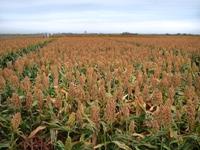U.S. sorghum farmers’ investments in international marketing efforts pay dividends, as evidenced by USDA’s record of sorghum exports to Morocco. According to USDA’s Global Agricultural Trade System, Morocco went from importing no U.S. sorghum in 2009 to nearly 70,000 tons (2.6 million bushels) so far this marketing year through March.
According to U.S. Grains Council sources, another vessel has been purchased for delivery within the next two weeks.
Florentino Lopez, marketing director for the United Sorghum Checkoff Program, said this kind of market opportunity doesn’t just happen on its own. “After a market assessment in Morocco was conducted last fall, it was determined there was a huge market there for U.S. sorghum. The Council, with the help of the Sorghum Checkoff, began working immediately. We sent nutritionists to work with local producers to show them how to use sorghum in their feed rations. We also brought a team of importers to the United States last fall to see U.S. sorghum production firsthand, which actually yielded some sales,� he said. “We see Morocco as great long-term buyer of our product.�
This week, a team of Moroccan poultry producers traveled to the United States as a follow-up to the previous mission. A Moroccan importer representing Graderco, the largest importer in Morocco, participated in both missions. He was so pleased with the first mission, he wanted to expose more of his customers to the U.S. product so they could to capture this market opportunity.
The Moroccan team toured several facilities and farms in Texas to better understand sorghum production in the United States. Through projects like buyer missions, the Sorghum Checkoff and the Council are working to increase the international market for sorghum.
Texas sorghum producer Bill Kubecka hosted the team at his farm in Palacios, Texas. “This mission gave us an opportunity to meet with the actual buyers and to explain our industry to them,� Kubecka said. “We have the potential to provide them with a quality product and to develop relationships that could result in business in the future.�
After leaving the United States, the team will then travel to Guadalajara, Mexico, to see U.S. sorghum use in poultry rations firsthand. “What’s unique about this program is that Mexico and Morocco are very similar in their economic situations, climatic conditions and currency devaluation risks,� said Lopez. “This team will truly be able to understand the feasibility of how they can take advantage of this U.S. product in their own operations.�


